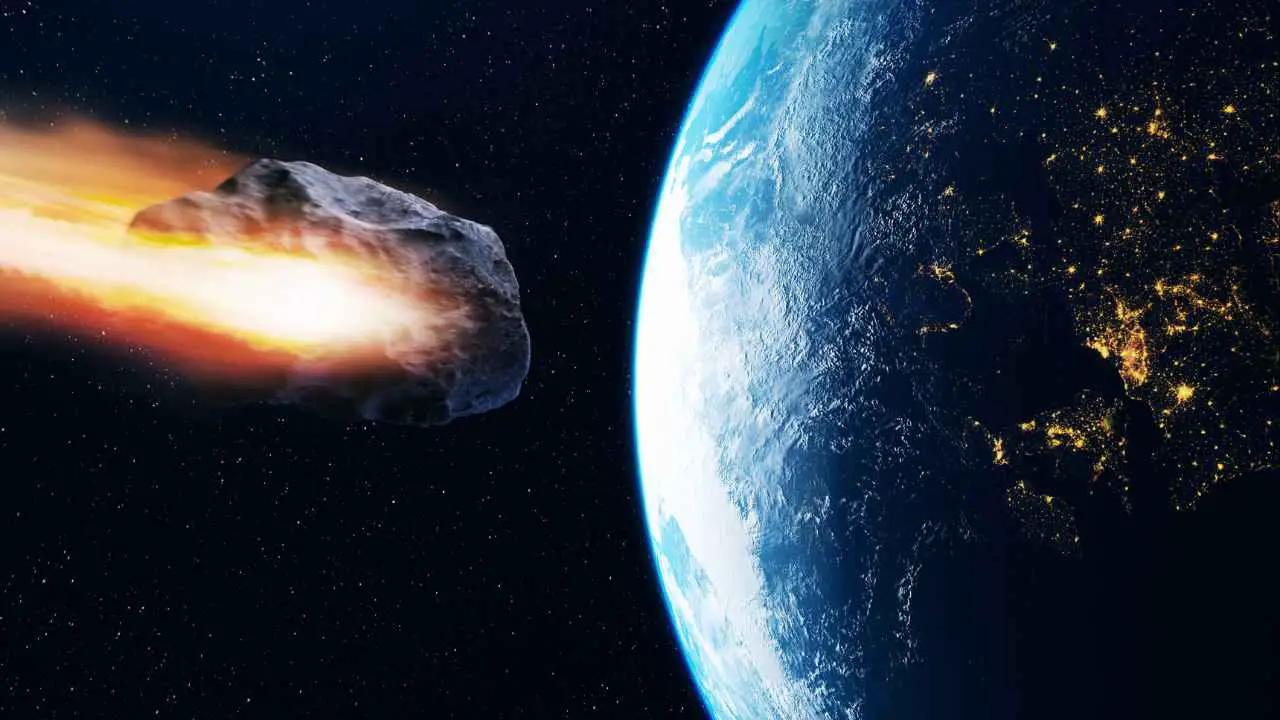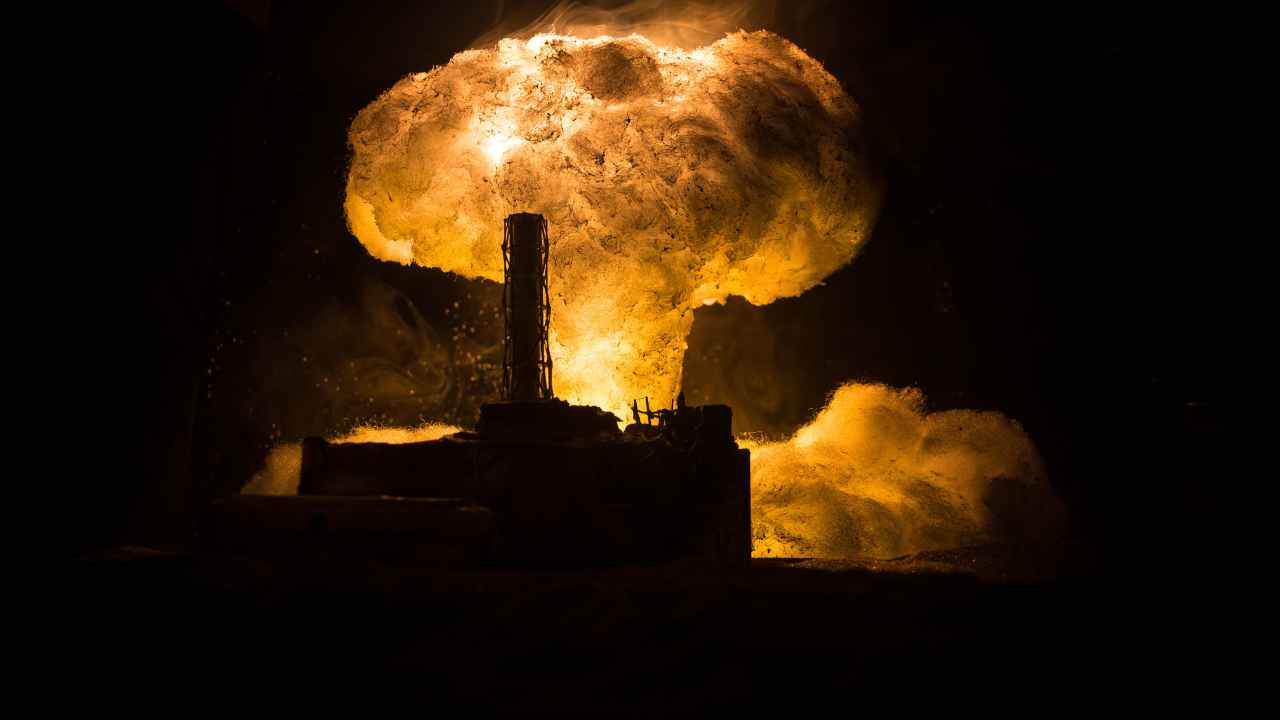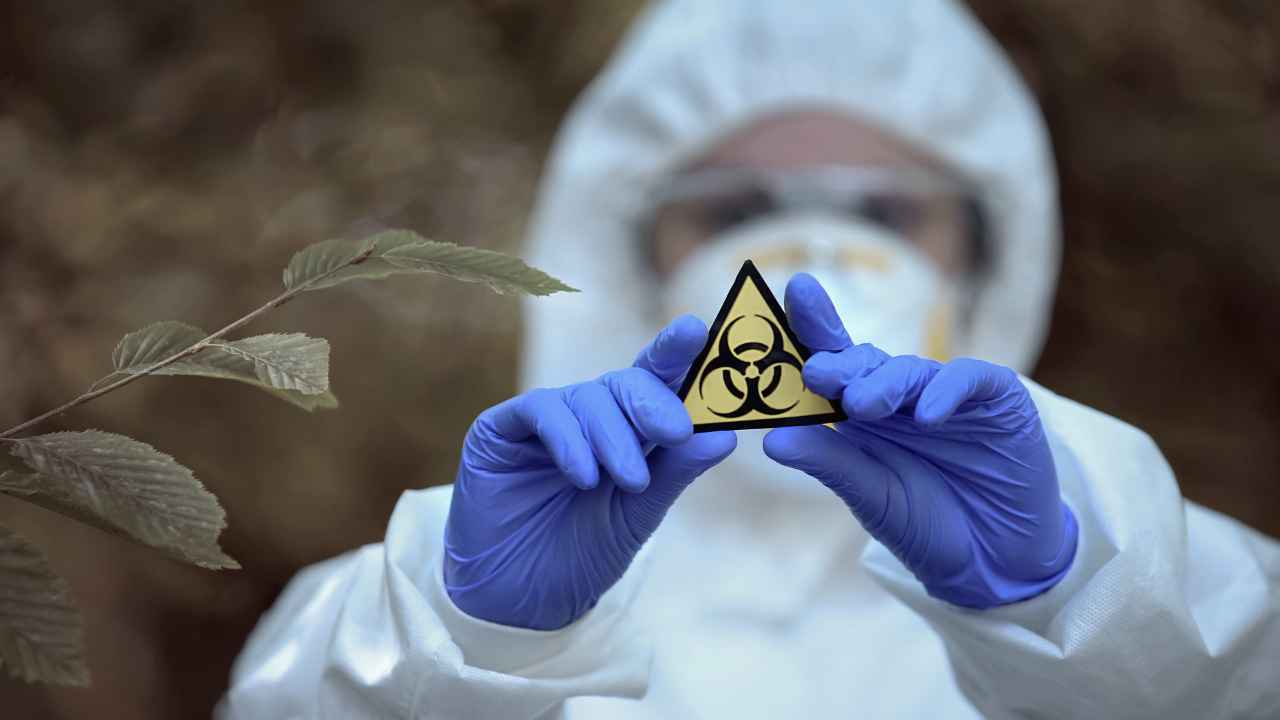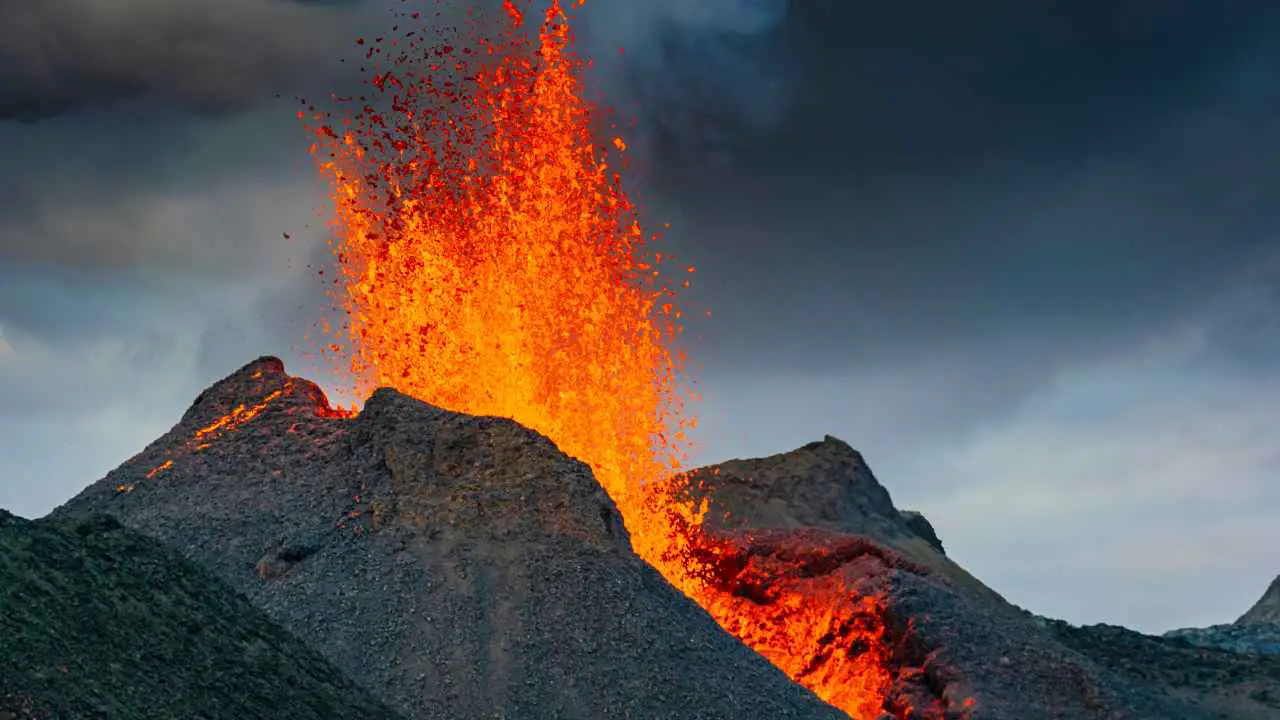The future of Earth is a complex and uncertain topic, which has various potential scenarios that scientists explore. According to some scientists, the first living thing appeared on Earth around 4 billion years ago. However, the Earth was still battered by huge space rocks, even though life continued. Many disasters occurred in the Earth’s history which almost killed countless lifeforms and removed nearly all species on Earth. Thus, life bounced back and new species emerged. In essence, the end of life on Earth could result from a combination of asteroid impacts, natural, or super volcanic eruptions, and human-induced factors. While some impacts are immediate, others unfold over long periods. While it’s challenging to predict a specific outcome.
Asteroid Impact:

An asteroid impact occurs when a space rock, known as an asteroid, collides with a celestial body, such as a planet. As the asteroid enters a planet’s atmosphere, friction with the air causes it to heat and procedure a luminous trail, commonly referred to as a meteor. The outcome of the impact depends on the asteroid’s size; smaller ones may break up in the atmosphere, creating an airburst, while larger ones can reach the planet’s surface, causing a direct impact.
66 million years ago an asteroid hit the Gulf of Mexico, and it ended the life of dinosaurs, as well as other species on Earth. This event was the most important in history. If the asteroid strike didn’t happen then the dinosaur might continue to rule the Earth and human lives would be in danger. The chances of a significant asteroid impact on Earth according to NASA is only once every few million years. NASA actively monitors the skies for Near-Earth Objects Observations (NEOO) that could pose a potential threat, and efforts are in place to track and assess the trajectories of these objects.
If a large asteroid hits the Earth, it can create a big crater, which will cause earthquakes, and start fires. If it lands in the ocean, it might even create huge waves called tsunamis. The impact can throw debris into the air, leading to changes in climate and sunlight. This could harm plants, animals, and ecosystems. In extreme cases, like the one that wiped out the dinosaurs, it could lead to mass extinction. Scientists work to detect and track asteroids, and plans are in place to prevent potential threats.
Nuclear War:

Nuclear war poses a grave threat to life on Earth through devastating explosions, widespread radiation, and long-lasting environmental consequences. The initial destruction would be catastrophic, causing immediate casualties and damaging infrastructure. The fallout, which contains radioactive particles, would further harm human health and ecosystems. There is also a chance that the explosions might make the Earth colder, affecting weather and planets. Efforts to prevent nuclear war focus on international cooperation, disarmament, and diplomatic solutions to ensure global peace and stability.
The chances of a nuclear war are challenging, the risk of nuclear conflict depends on various geopolitical, diplomatic, and military factors. Global efforts, including arms control treaties and diplomatic negotiations, aim to reduce the likelihood of nuclear war. Even though things are better than during the Cold War, some concerns remain because of conflicts in certain regions and more countries having nuclear weapons. Ongoing international cooperation and dialogue are essential for maintaining global security and preventing the devastating consequences of a nuclear war.
A nuclear war on Earth would result in widespread destruction, immediate casualties, and long-term consequences. The detonation of nuclear weapons causes harmful radiation, leading to health issues and environmental contamination. The aftermath would have far-reaching global consequences, affecting international relations, economies, and geopolitical stability.
Biological Warfare:

Biological warfare involves using harmful germs or toxins as weapons to intentionally cause widespread illness or death. If released, these agents can spread quickly, leading to a global health crisis and disrupting societies. Beyond immediate health impacts, the intentional use of harmful biological agents could have long-term consequences on the environment and overall well-being.
The aftermath of biological warfare on Earth is hard to predict. The use of biological weapons is prohibited under international law, including the Biological Weapons Convention (BWC). Even though there are rules against it, some are concerned that it could still happen. International agreements and strict regulations aim to prevent the misuse of biological weapons, highlighting the importance of global cooperation in addressing such risks.
Biological warfare’s aftermath is devastating, causing widespread illness, high mortality, and potential global pandemics. Deliberate release of harmful germs disrupts economies, overwhelms healthcare systems, and leads to long-term social consequences. Beyond immediate health impacts, the intentional use of biological agents harms ecosystems and biodiversity, affecting the overall well-being of the planet. Prevention involves international cooperation, treaties, and strict regulations against biological weapons to avoid these catastrophic outcomes.
Global Pandemic:

A global pandemic could lead to widespread illness and death worldwide. The rapid spread of a highly contagious disease would cause severe social disruption, impacting economies and daily life. High mortality rates and overwhelmed healthcare systems could result in prolonged societal changes.
The chances of a global pandemic on Earth depend on various factors, including the emergence of highly infectious agents, global travel patterns, and the effectiveness of public health measures. While it’s challenging to predict specific probabilities, history has shown that pandemics can occur. Ongoing efforts, such as surveillance, early detection, and international cooperation, aim to mitigate the risk and manage potential outbreaks.
A global pandemic’s aftermath includes widespread illness, long-term health impacts, and disruptions to daily life and economies. Societal structures may change, and businesses could face challenges. Individuals may experience increased stress and anxiety, contributing to mental health issues. The economic fallout may lead to unemployment and financial instability. In response, healthcare systems may undergo reforms to better prepare for future crises.
Super Volcanoes:

🔬 Subscribe to SciMail
Get the latest science discoveries straight to your inbox!
Supervolcanoes are exceptionally large volcanic systems capable of erupting on a cataclysmic scale. These eruptions release immense volumes of magma and ash, dwarfing those of typical volcanoes. If a supervolcano were to erupt, it could release vast amounts of ash and volcanic gasses into the atmosphere. The resulting ash clouds may block sunlight, causing a volcanic winter. This prolonged darkness could disrupt ecosystems, impact global climate, and potentially lead to catastrophic consequences for life on Earth.
The chances of a supervolcanic eruption occurring on Earth shortly are considered relatively low. Supervolcanoes are rare, and there are only a few known supervolcanic systems on the planet. Additionally, these volcanoes do not erupt frequently. One supereruption takes place every 857,142 years or so. The potential consequences would be severe. Scientists actively monitor known supervolcanoes and study volcanic activity to better understand the risks associated with such events.
After a supervolcanic eruption, the aftermath includes a volcanic winter with reduced sunlight and lower temperatures, disrupting global climate and impacting ecosystems. Agricultural consequences may lead to crop failures and food shortages. Harmful volcanic gasses and ash pose health risks for humans and animals. infrastructure, including buildings and roads, can be damaged. Mitigating such impacts involves ongoing monitoring, early warning systems, and research to better understand and prepare for the potential consequences of super volcanic activity.
Global Warming:

Global warming refers to the long-term increase in Earth’s average surface temperature due to human activities, primarily the release of greenhouse gasses. It can have severe consequences, including rising sea levels, extreme weather events, and disruptions to ecosystems. The potential end of life on Earth due to global warming involves adverse impacts on biodiversity, food sources, and habitability. While it may not directly lead to the complete end of life, unchecked global warming poses significant threats to the sustainability and well-being of living organisms.
Global warming is a well-established scientific phenomenon that has been occurring over the past century, primarily driven by human activities such as the burning of fossil fuels and deforestation. Kit is not a future event with a specific probability, but a current and ongoing process. Predicting the future trajectory of global warming involves complex climate models and uncertainties related to human behavior and policy decisions. Efforts to mitigate global warming include reducing greenhouse gas emissions and transitioning to sustainable practices. The consequences of unchecked warming include rising sea levels, extreme weather events, and disruptions to ecosystems.
The aftermath of global warming encompasses rising sea levels causing coastal flooding, increased frequency of extreme weather events, disruptions to ecosystems and biodiversity, ocean acidification impacting marine life, challenges to agriculture with potential food shortages, and health risks due to the spread of diseases and heat-related illnesses. Urgent global efforts to reduce greenhouse gas emissions, transition to sustainable practices, and adapt to climate changes are crucial to mitigate these severe consequences and safeguard the well-being of the planet and its inhabitants.
Changes in the Sun: Death, Change in Its Reaction:

The Sun changes its lifecycle, including changes in its composition and behavior, as the Sun ages, it will eventually exhaust its nuclear fuel, causing significant changes. The most critical change will be its transition to a red giant, expanding in size and potentially engulfing the inner planets, including Earth. This process is estimated to occur in about 5 billion years. The expanding Sun and the altered solar radiation could make Earth uninhabitable, marking the end of life on our planet due to the changes in the Sun’s life cycle.
The changes in the Sun’s life cycle, particularly its transition to be a red giant, are natural and will occur over an extremely long timescale, estimated to be around 5 billion years from now. This process is part of the normal evolution of stars, including our Sun. While the eventual transformation will indeed happen, the timescale is so vast that it does not pose an immediate threat to life on Earth. Human civilization and life on our planet are more immediately influenced by other factors, such as human activities and climate change.
In approximately 5 billion years, the Sun will evolve into a red giant, expanding and engulfing the inner planets, including Earth. The intense heat released during this process will make Earth uninhabitable, marking the end of life on our planet. This cosmic event is a natural consequence of stellar evolution, occurring over an astronomical timescale. While it poses no immediate threat, understanding these long-term processes contributes to our broader knowledge of the universe and the fate of celestial bodies.
AI (Artificial Intelligence):

Artificial Intelligence (AI) refers to machines or computer systems that can perform tasks that typically require human intelligence, such as learning, problem-solving, and decision-making. AI can be beneficial in various fields, from healthcare to transportation it can as well as it can be threatening from all sides, and it can pose an existential risk to humanity, involving scenarios like unintended consequences, loss of control, malicious use, or resource competition. While there are ethical concerns and considerations about the responsible development and use of AI, the idea of AI causing the end of life on Earth is largely a speculative and fictional concept often depicted in science fiction.
The idea of AI ending life on Earth is highly unlikely and more aligned with science fiction scenarios than reality. However, Max Tegmark, who is a physicist and AI expert at Massachusetts Institute of Technology predicted that there is a 50 percent chance that it will wipe out humanity. AI technologies, while powerful, are tools created and controlled by humans. Responsible development, ethical guidelines, and regulatory frameworks are in place to ensure AI’s safe and beneficial use.
The aftermath of AI on Earth involves technological progress, economic shifts, and ethical considerations. AI advancements promise efficiency and innovation, impacting employment and daily life. Ethical concerns include privacy, bias, and accountability, necessitating regulatory guidelines. Many scholars believe that the advances in AI can eventually lead to a semi-apocalyptic post-scarcity economy where intelligent machines can perform better than humans in nearly if not every domain. However, if AI is integrated into society, it may reshape industries and lead to new opportunities.
What would happen after life on Earth ends?
After life on Earth ends, natural processes like erosions and cosmic phenomena will shape its remnants. In about 5 billion years, the expanding Sun will swallow Earth, and the outer layers will create a planetary nebula. Human artifacts may persist for a while but will eventually be affected by space conditions. Life could potentially develop elsewhere in the universe. The remnants of Earth may interact with other celestial bodies or become part of the interstellar medium, the space between stars, over an extremely long timescale. The specific details are complex and depend on various factors. Making predictions is challenging.


Leave a Reply